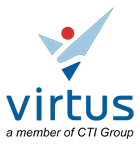The digital landscape has shifted dramatically in recent years. Traditional on-premises infrastructure can no longer keep up with the demand of modern business. Gartner predicts that by 2025, cloud-native platforms will underpin more than 95% of new digital initiatives – a dramatic leap from just 30% in 2021. This rapid transformation highlights a critical shift from being a technological choice to a business necessity.
While moving to cloud-native platforms unlock immense potential, it also introduces complex challenges. Organizations must contend with increasingly sophisticated cyber threats and the ever-present risk of data breaches.
The IBM Security Report reveals that data breaches now cost organizations an average of US$4.45 million in 2023, with unknown threats posing particularly significant risks to business continuity and data security. This reality underscores why application modernization isn’t just about improving functionality—it’s about building resilient, secure systems that can protect against modern threats while enabling business agility.
Understanding the Concept of Application Modernization
Application modernization is like upgrading a reliable but aging commercial aircraft. While it’s still flying, it needs modern navigation systems, better fuel efficiency, and enhanced safety features to meet current standards. Similarly, application modernization transforms legacy systems into agile, cloud-native platforms while strengthening data backup security – all without losing the core business logic that makes these applications valuable. This isn’t just about moving to the cloud; it’s about reimagining how applications can better serve your business in today’s digital ecosystem.
Why Do Enterprises Need Application Modernization?
The reality is stark: maintaining legacy applications is becoming increasingly unsustainable. Forrester reports that organizations spend up to 75% of their IT budgets maintaining existing systems – resources that could be better invested in innovation and growth.
Beyond the cost factor, legacy systems present significant operational challenges:
- Reduced agility in responding to market changes
- Integration difficulties with modern tools and platforms
- Growing security vulnerabilities
- Increasing maintenance complexity
What Are the Benefits of App Modernization?
Modernizing applications delivers tangible benefits that directly impact your bottom line. Modern applications offer dynamic scalability, responding automatically to changing demands while optimizing resource utilization. This flexibility translates into significant cost savings – organizations typically see 30-45% reductions in IT operational costs.
More importantly, modernized applications provide enhanced security features and robust data backup security, creating a more resilient business infrastructure. Development cycles that once took months can be reduced to weeks or even days, allowing faster response to market opportunities.
Building an Application Modernization Strategy
Success in application modernization requires a well-structured approach that balances immediate needs with long-term objectives.
Application Modernization Pillars
Modern application transformation stands on three essential foundations: skilled teams who understand modern technologies, streamlined processes that embrace agile methodologies, and cutting-edge tools that enable rapid development and deployment.
Application Modernization Steps
The journey follows a clear progression: assess your current application landscape, develop a targeted modernization roadmap, implement changes iteratively, and maintain continuous improvement cycles. Each step builds upon the last, creating a sustainable transformation process.
Application Modernization Strategies
Organizations can choose from several proven approaches:
- Rehosting: Moving applications to modern infrastructure with minimal changes
- Refactoring: Optimizing code and architecture for better performance
- Rebuilding: Creating new cloud-native applications when necessary
Modernizing the App Development Process

Today’s application development requires a fundamental shift in approach. DevOps practices break down traditional silos between development and operations teams, enabling faster, more reliable software delivery. By incorporating automated testing and continuous integration/deployment (CI/CD) pipelines, organizations can reduce errors and accelerate time-to-market significantly.
Security can’t be an afterthought – it must be woven into the fabric of development from day one. This “shift-left” security approach helps catch vulnerabilities early when they’re less costly to fix.
Key Technologies for Application Modernization
The modern application landscape is built on transformative technologies that enable greater agility and resilience. Containerization, orchestrated by platforms like Kubernetes, allows applications to run consistently across different environments while maximizing resource efficiency.
Microservices architecture breaks down monolithic applications into smaller, manageable services that can be developed, deployed, and scaled independently. This approach, combined with API-first design principles, creates flexible applications that can adapt quickly to changing business needs.
Application Modernization Solutions from Virtus
At Virtus Technology Indonesia (VTI), we understand that modernizing your applications is not just about technology—it’s about aligning solutions with your business goals. We offer an integrated suite of tools and services centered around leading products from Red Hat, Palo Alto Networks, and Rubrik.
Red Hat OpenShift
Red Hat OpenShift is an enterprise-ready Kubernetes container platform that simplifies the deployment and management of cloud-native applications. Serving as a foundation for your modernization efforts, OpenShift allows you to deploy applications rapidly and at scale without the dependency on physical infrastructure. By providing a self-service platform for developers, OpenShift streamlines the process of building and deploying applications, accelerating time-to-market.
Benefits of Using OpenShift
- Accelerated Deployment: Automate the provisioning, management, and scaling of applications, enabling faster delivery of new services and features.
- Scalability and Flexibility: Easily scale applications horizontally or vertically to meet changing demand without manual intervention.
- Built-In Security: Incorporate robust security features such as integrated authentication, role-based access control, and vulnerability scanning, ensuring your applications are secure from development through production.
- Consistent Development Environment: Provide developers with consistent tools and environments, reducing configuration inconsistencies and deployment issues.
Read More: Microservices: Definition, Benefits, and Challenges You Must Know
Palo Alto Networks Prisma Cloud
As organizations adopt cloud-native technologies, securing these environments becomes increasingly complex. Palo Alto Networks Prisma Cloud offers comprehensive security for cloud-native applications and infrastructure, ensuring that your modernization efforts are protected against evolving threats. It delivers real-time detection and response capabilities, protecting workloads whether they are in containers, virtual machines, or serverless architectures.
By integrating security seamlessly into the development process, Prisma Cloud enables you to identify and remediate vulnerabilities early, enforce compliance, and protect applications at runtime.
Capabilities of Prisma Cloud
- Comprehensive Workload Protection: Secure applications from code to runtime, identifying vulnerabilities, misconfigurations, and compliance issues.
- Real-Time Threat Detection: Monitor your environment for suspicious activities and provide immediate alerts, allowing you to respond quickly to potential threats.
- Compliance and Governance: Automate compliance checks against industry standards and best practices, simplifying audits and reporting.
- Integration with OpenShift: Work seamlessly with Red Hat OpenShift to provide a unified security framework without hindering development speed.
Baca Juga: 6 Reasons Why Your Business Needs to Focus on Cloud Security
Rubrik
In an era where data is the backbone of business operations, protecting that data is paramount. Rubrik acts as a comprehensive data protection solution that safeguards your critical information against various threats, including ransomware, natural disasters, and human error. It ensures that your data is always available, recoverable, and compliant with regulatory requirements.
By automating data protection and providing instant recovery capabilities, Rubrik reduces downtime and data loss, maintaining business continuity.
Capabilities of Rubrik
- Simplified Data Management: Automate backup and recovery processes with policy-driven management, reducing administrative overhead.
- Ransomware Protection: Provide immutable backups and anomaly detection to protect against ransomware attacks, ensuring you can recover quickly without paying a ransom.
- Fast Recovery: Enable near-instant recovery of applications and data, minimizing downtime and maintaining business operations.
- Compliance and Governance: Offer detailed reporting and auditing capabilities to meet data governance and compliance mandates.
Read More: Comprehensive Guide to Cloud Backup: Your Data Security Solution in the Digital Era
Securing Data in the Cloud-Native Era
In cloud-native environments, traditional perimeter-based security models fall short. The dynamic nature of containers and microservices increases the attack surface, and data is spread across various locations and platforms. Protecting this distributed environment requires a comprehensive and integrated security approach.
By integrating Red Hat OpenShift, Palo Alto Networks Prisma Cloud, and Rubrik, you create a multi-layered defense strategy:
- End-to-End Security: Secure applications from development through deployment, protecting against both known and unknown threats.
- Data Integrity and Availability: Ensure that your data is protected and recoverable, even in the face of sophisticated cyber-attacks.
- Operational Efficiency: Automate security and data protection processes, allowing your teams to focus on innovation rather than routine tasks.
- Compliance Assurance: Maintain compliance with industry regulations through continuous monitoring and reporting, reducing the risk of penalties.
Leveraging Cloud Services and Container Platforms
Deploying applications by leveraging cloud services and container platforms—offers significant advantages:
- Agility: Quickly deploy and scale applications to meet business demands without the delays associated with hardware procurement and setup.
- Cost Savings: Reduce capital expenditure on hardware and pay only for the resources you use, optimizing operational expenses.
- Resiliency: Benefit from built-in redundancy and failover capabilities inherent in cloud platforms, enhancing business continuity.
Red Hat OpenShift enables developers to deploy applications seamlessly across different environments, whether on-premises or in the cloud, without altering code. This flexibility accelerates development cycles and reduces dependency on physical infrastructure.
Palo Alto Networks Prisma Cloud ensures that as you deploy rapidly, security keeps pace. By integrating security into the DevOps process, you maintain robust protection without slowing down innovation.
Rubrik complements this approach by providing reliable data protection irrespective of where your applications reside. In the event of infrastructure failures or cyber incidents, Rubrik ensures that your data is recoverable, and your business can continue operating with minimal disruption.
Contact Virtus to Deploy Reliable and Smooth Application Modernization
Virtus Technology Indonesia (VTI) brings together deep expertise and leading technologies to accelerate your modernization journey. As part of the Computrade Technology International (CTI) Group and an authorized distributor of Rubrik, Palo Alto Networks, and Red Hat, we offer:
- Local expertise and support
- Proven implementation methodologies
- Comprehensive training and knowledge transfer
- Ongoing optimization and maintenance
Don’t let legacy systems hold your business back. Contact us today to explore how our integrated application modernization solutions can transform your business for the digital age. Our team of certified experts is ready to help you build a more agile, secure, and efficient application environment that drives your business forward. Let’s talk about your transformation journey and get ready to modernize your applications. Click here to reach us.
Author: Jeko Reza
Content Writer CTI Group




























